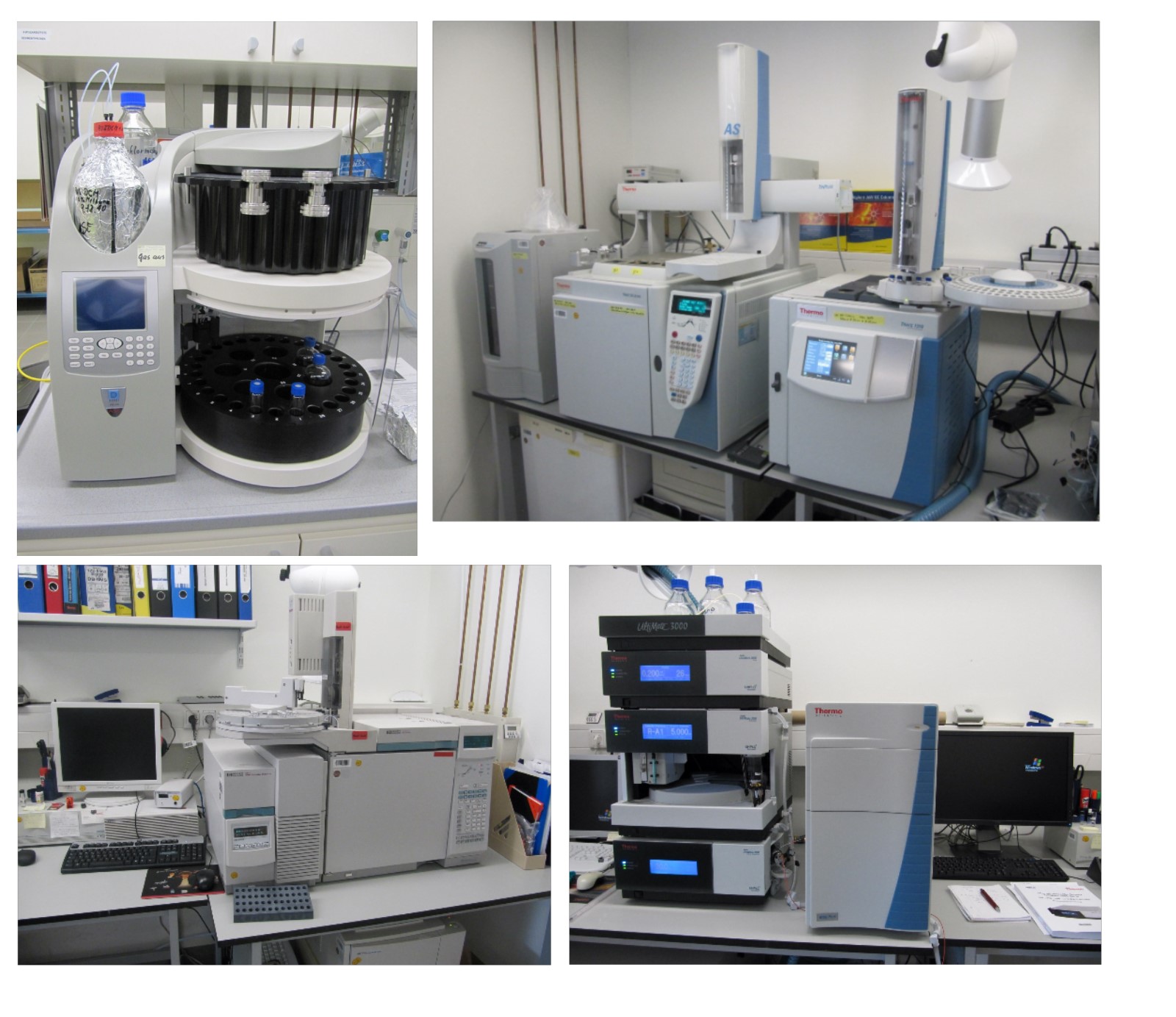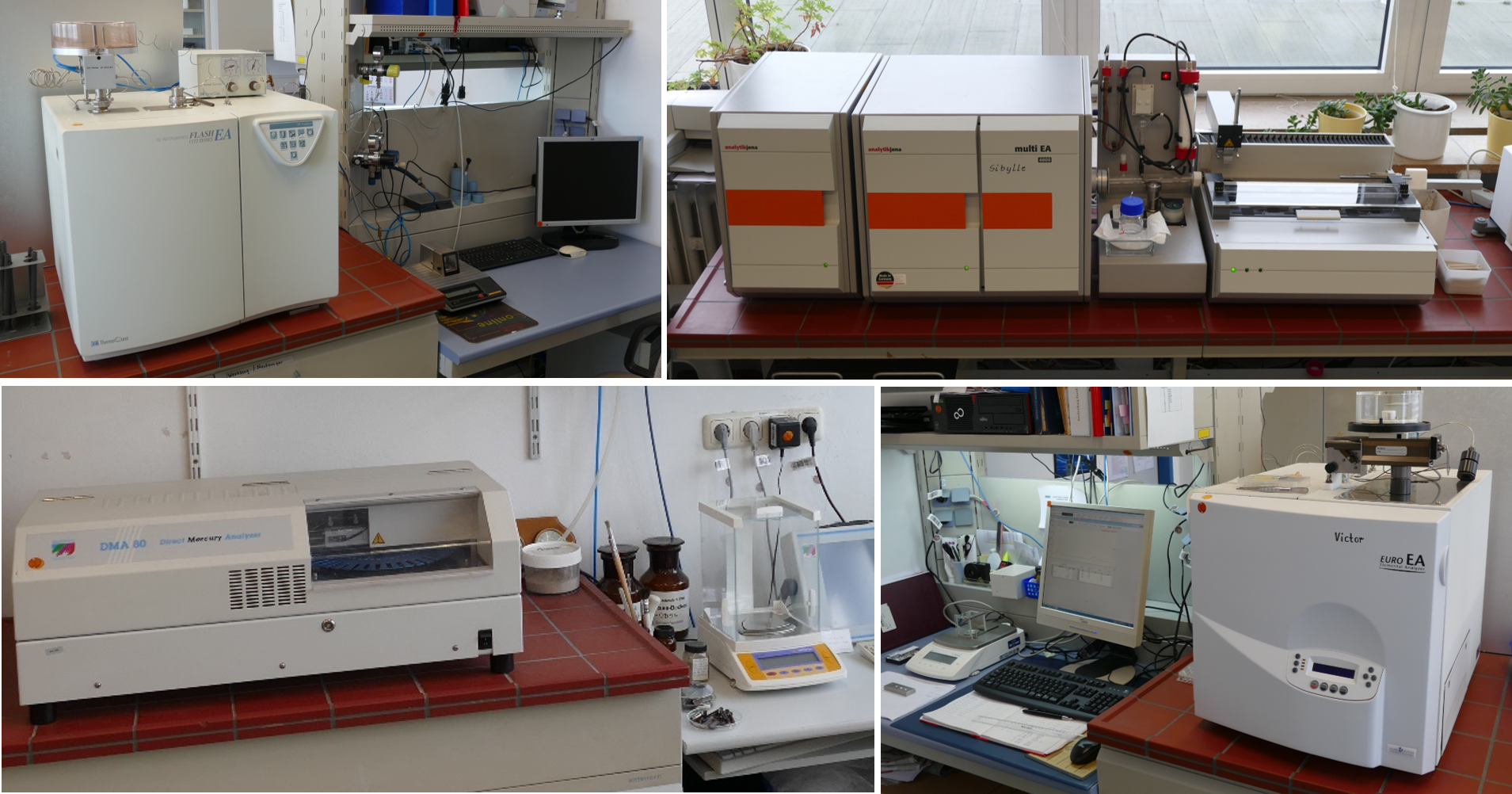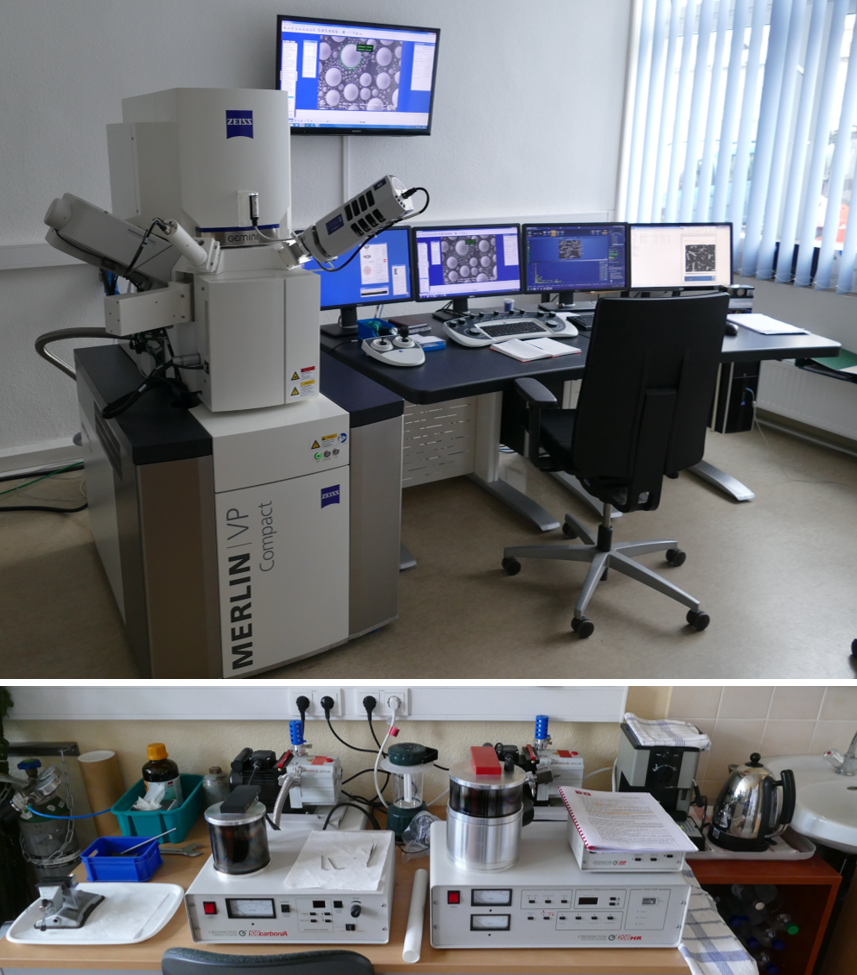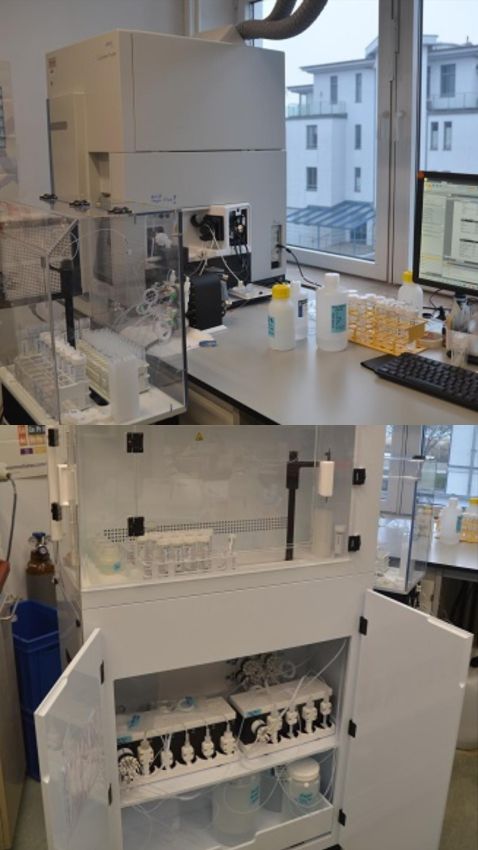
Infrastructure
Itrax core scanner
MS logger
Sediment core imaging
Grain size measurements
Sediment freeze-drying and ball milling
Biomarker laboratory
Laboratory for elemental analyses
Laboratory for scanning electron microscopy and x-ray micro analyses
Laboratory for gammaspectrometry
Laboratory for ICP analyses
With the Itrax XRF core scanner we routinely determine the semi-quantitative major element composition of split sediment cores with a down-core resolution of up to 200 µm. The scanner is run with a high power Cr-XRF tube and optionally performs overview images with an optical RGB line scan camera system and digital radiographs.
The magnetic susceptibility logger is a permanent loan of the GFZ Helmholtz Center Potsdam and was developed by Dr. habil. Norbert Nowaczyk. This semi-automated system is equipped with a Barrington E sensor and performs morphology-controlled magnetic susceptibility measurements on split sediment cores with a down-core resolution of up to 1 mm.
Split sediment cores are routinely documented with high-quality images using a self-designed photographic system. The system was developed by our technical engineer Sascha Plewe.
For sedimentological purposes grainsize distributions of sediment samples are determined either by a standard sieve shaker system (Retsch) and/or a CILAS laser particlesize analyzer.
Before in-depth geochemical analyses our sediment samples are typically freeze-dried and grinded. Several freeze-drying systems (Christ) and one ball mill (Fritsch) are ensuring the processing of large sample amounts.

In our biomarker lab we use sediment extracts to analyse various lipids and develope organic proxies. Presently the lab is equipped with :
- ASE 350 (Thermo Fisher Scientific) for semi automated lipid extraction,
- two gas chromatographs with flame ionization detectors (GC-FID; Thermo Fisher Scientific TraceUltra GC und Trace 1310 GC)
- gas chromatography-mass spectrometry (GC-MS; Agilent HP6890 Serie GC und HP5973 mass selective detector)
- high-performance liquid chromatography coupled with atmospheric pressure chemical ionization mass spectrometry (HPLC APCI-MS; Thermo Fisher Scientific Ultimate 3000 UHPLC und MSQ Plus)

Here we analyze the elements carbon, nitrogen, sulfur, and mercury, mostly on dry sediment samples. Modern auto-sampler allow to analyze large series of samples. The following machines are available: Euro-Vector EA from Hekatech (TC, TN, TS); Flash EA 1112 from CE Instruments (TC, TN); Multi-EA 4000 from Jena Analytik (TIC); and DMA 80 from Milestone Lab. (Hg). The organic carbon we determine (calculate) usually by the difference TC-TIC. In the laboratory next door, we also produce extractions from sediment samples for determination of biogenic opal (SiO2) and phosphorous. These analyses were done by ICP-OES.

In this lab we have a Merlin-Compact VP microscope from Zeiss, coupled with an EDX from Oxford-Instruments. The microscope has several detectors (SE, BSE, In-Lens) for preparing high-quality pictures from the objects. The EDX-technique including the comfortable software Inca and Aztec allows the analysis of major- and minor elements in very small sample volumes (below 1 µm3). In our lab we analyses various sample materials from rocks, sediments, suspended matter, biological objects including micro-organisms.
A special tool allows an automated particle analysis, also for a few samples, overnight. For this, an image processing on defined windows at the sample, the machine identifies the single particles from the background (e.g. filter material) and analyze the particles automatically (after each other) for morphological parameters and concentrations of all elements found. In result we get a complete table for e.g. 2000 single particles for each sample with the morphological parameters and elements. Additionally, a mineral identification data behind allows to characterize the semi-quantitative mineralogical composition of the samples. For all analyzed particles of each sample there is the opportunity (after finishing of the automated analyses) to go back to the particle and to make high-quality photographs and control spectra for prove. This makes it possible to search for single rare minerals or particles with a special chemical composition (e.g. pyrite, barite, Fe-phosphates, REE-phosphates, zircon, etc.).

The Gamma spectometry laboratory is primarily dealing with the establishment of chronologies (sediment depth / age relationships) in fine-grained sediments using natural (Lead-Pb-210) and artificial (Caesium-Cs-137/Americium-Am-241) radioactive isotopes. The lab is equipped with three Canberra Ge-detectors: two BE3830-7500SL-RDC-6-ULB and one well detector (GCW4021-7500SL-RDC-6-ULB).
For the determination of major elements and selected trace metals in various matrices, an ICP-OES (iCAP-7400 Duo, Thermo Fisher Scientific) is used.
• Major elements (e.g. Al, Fe, Ca, P) and trace metals (e.g. Ba, Co, Mn, Sr, Zr) for a general geochemical characterization of solid materials (sediments and suspended matter) after acid digestion (usually HNO3-HClO4-HF mixture).
• Major ions (Ca, K, Mg, Na, S) as well as P, Mn and Si in fresh and seawater samples.

The determination of less concentrated trace metals in various solids after acid digestion is done by a Quadrupole ICP-MS (iCAP Q, Thermo Fisher Scientific). A coupled PrepFast (ESI) system allows automatic sample dilution and online addition of internal standards. Trace metals in fresh and sea water samples are measured with a coupled SeaFast (ESI) module for matrix removal and pre-concentration.
• Trace metals (e.g. Bi, Cd, Cu, Mo, Re and Pt after column separation, Sb, Se, Te, Tl, U, V, W, SEE) in solid materials (sediments and suspended matter) after acid digestion to reconstruct redox conditions, anthropogenic pollution or source areas.
• Stable lead isotope ratios (e.g. 206/207Pb) as a stratigraphic tool.
• Element ratios (Mg/Ca, Sr/Ca, U/Ca) in microfossils (e.g. ostracods) for salinity and temperature reconstructions.
• Redox-sensitive trace metals (e.g. Mn, Mo, Re, U, W) in water samples to investigate exchange processes between dissolved and particulate phases.